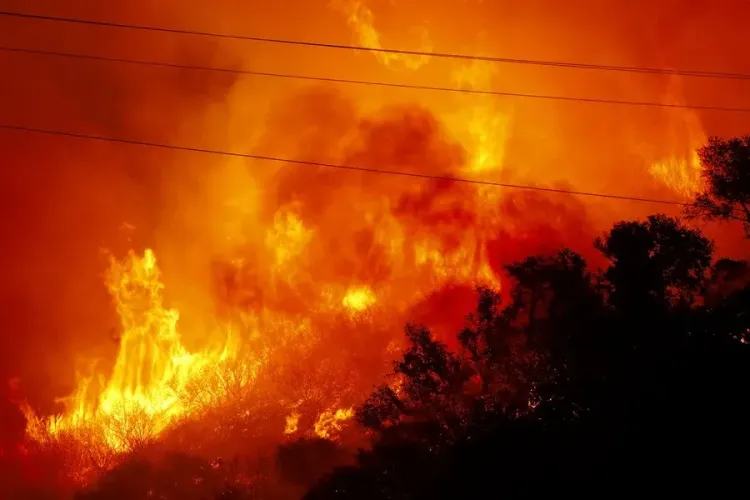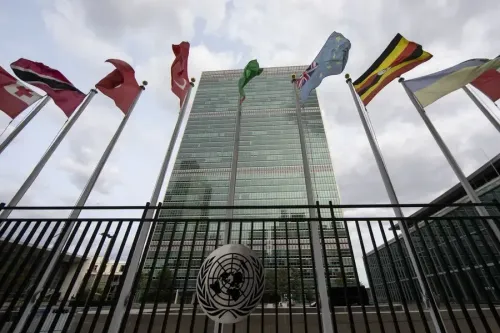What is Causing the Wildfire at Grand Canyon National Park?

Synopsis
Key Takeaways
- The Dragon Bravo Fire has expanded significantly, now covering 472 square kilometers.
- Containment efforts are ongoing with 1,214 firefighters on the scene.
- Evacuations have been conducted for over 900 people.
- Weather conditions may change with the arrival of monsoon moisture.
- This season ranks as one of the most active wildfire seasons on record.
Los Angeles, Aug 4 (NationPress) The Dragon Bravo Fire in Arizona has escalated to approximately 472 square kilometers due to strong winds and dry timber conditions, as reported by the US interagency wildfire website.
The fire, which was sparked by a lightning strike on July 4 at the Walhalla Plateau within the park, is currently only 12 percent contained despite the tireless efforts of 1,214 firefighters, aided by helicopters and large air tankers.
Evacuations have been successfully carried out for over 900 individuals, 54 trail mules, and park staff. Firefighters are utilizing graded forest roads, canyon walls, and remnants of past burns to manage the wildfire since it started mid-July, according to reports from Xinhua news agency.
Forecasters anticipate that monsoon moisture will reach northern Arizona by mid-week, increasing humidity and providing a potential for rainfall, according to the latest fire weather briefing.
Official records indicate that the fire began as a smolder on July 4, dramatically escalating in the days that followed. By July 10, evacuations were ordered for 500 visitors as the fire's threat grew.
The crisis intensified on July 12 when strong winds caused rapid fire spread throughout the lodge district. The US National Park Service confirmed the next day that the Grand Canyon Lodge, established in the 1920s, along with its stone dining room, numerous pine-sided tourist cabins, and several utility buildings, were consumed in less than two hours.
By July 31, the blaze had expanded beyond 400 square kilometers, marking it as one of Arizona's ten largest wildfires in history.
Officials warn that full containment could take weeks, influenced by weather conditions, fuel moisture, and the fire's dynamics.
Recent reports indicate that the 2025 wildfire season is among the most active on record.
As of late July, the National Interagency Fire Centre reported more than 41,000 wildfires, burning nearly 3 million acres—significantly exceeding the 10-year average. Notable fires include Oregon's megafire consuming over 95,000 acres, California's Madre Fire burning more than 80,000 acres, and Arizona's White Sage Fire scorching roughly 58,000 acres.









